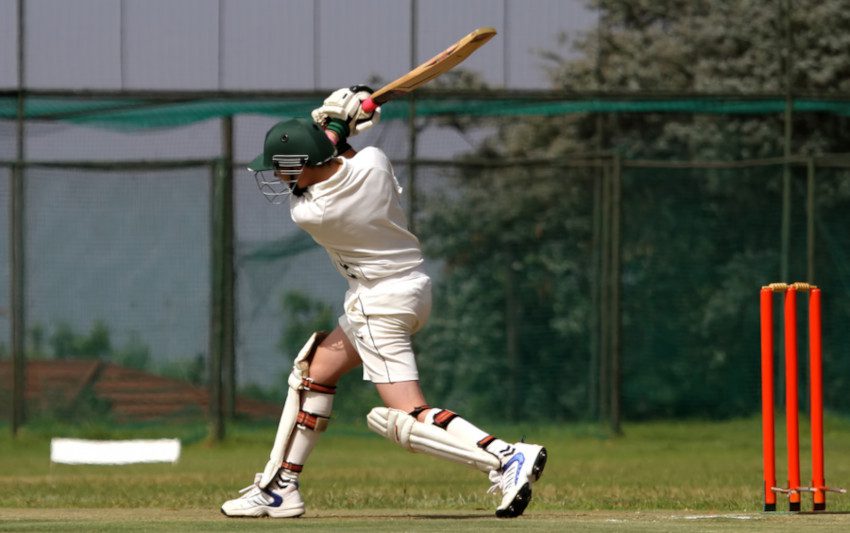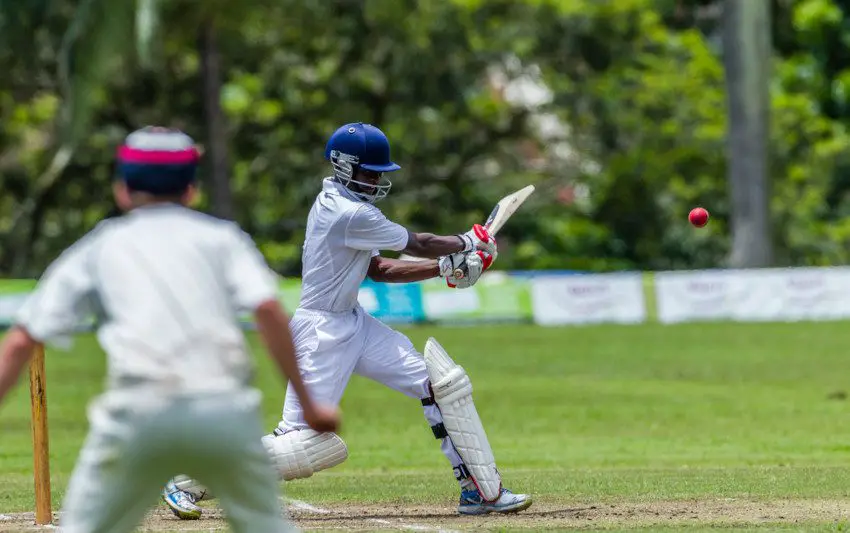Table of Contents
Let’s explore the various techniques bowlers use to surprise the batsman. A cricket team looks to go into a match with a balanced bowling attack consisting of different types of bowlers. In general, those bowlers can be split into two very basic categories – fast and slow. In the following guide, I will explain how each of those work.
Firstly, let’s find out what is the basic difference between these categories:
In Short
Cricket bowlers can be split into these two clear categories: Fast bowlers rely on speed but they can also employ seam and swing techniques in order to gain an advantage over the batsman. In contrast, slow bowling doesn’t have the pace to challenge batters so the slower bowlers must impart spin on the ball in order to have any chance of success. Spin bowlers can be split into those two subcategories of off spinners and leg spinners.
Bowlers are selected based on their form and also on the playing conditions which can either support their skills or negate their techniques. Keeping those conditions in mind, a cricket team still needs to select a balanced attack that features a mix of slow and fast bowling.
I will guide you through these seemingly complex categories and subcategories that can define cricket bowlers more accurately. If you are also interested in a complete list of cricket delivery types, keep on reading.
Bowling Techniques in Cricket
When a bowler releases the ball, this is known as a ‘delivery’. He or she is literally delivering the ball to the batsman at the other end of the pitch. The terms ‘balls’ or ‘deliveries’ are equally acceptable so a commentator may say that there are four balls left in the over or that there are four deliveries remaining.
Fast bowlers rely on different techniques in order to gain an edge over the batsman. These include swing, seam and sheer pace. The fastest bowlers may simply look to use their pace to claim wickets. With the quicker players sending down deliveries in excess of 90 miles per hour, this is enough to unsettle many batters.
But pace alone may not be enough if the ball doesn’t deviate in the air or off the pitch. That’s why swing and seam are the two main techniques that a quicker bowler will have in their armoury.
For slow bowlers, they simply have to make the ball move off the pitch. They have no pace in their delivery so the task is to get the ball to spin into, or away from the batsman once it pitches. If the conditions are helpful and the spin is fast and pronounced, it can be very difficult for the batsman to react quickly enough in order to play the ball effectively.
In the next section, we will look at those techniques in greater detail.
Spin and Fast Deliveries in Cricket
Types of Spin Bowling Techniques
Spin bowlers are generally split into the following two categories:
- Off Spinners
- Leg Spinners
Meanwhile, there are several factors to categorize spin bowling techniques, but for now we’ll restrict to these two:

Off Spinners
A right arm bowler will impart spin on the ball using the first and second fingers of their delivery hand. The intention is to move the ball from the off side to the leg side for a right handed batsman.
They do, however, have a number of variations and this is a comprehensive list of the deliveries that an off spinner may bowl.
Off Break
This is an off spinner’s stock delivery. To a right handed batsman it will spin from the offside to the legside while, to a left hander, it should spin from leg to off.
Doosra
A doosra is delivered by an off spinner with the intention of the ball spinning in the opposite direction to his conventional delivery. A change in grip sees the ball held between the index and ring fingers. The ball should then spin from leg to off to a right hander and vice versa to left handed batsmen.
Top Spinner
A top spinner will see the bowler twist their fingers at the point of delivery. There will be greater loop and, while the batsman will expect some spin, the ball is more likely to go straight on.
Carrom Ball
A Carrom Ball is produced when a bowler flicks the ball between his thumb and a bent middle finger. It is difficult to control but, when the skill is mastered, the ball can behave in a random manner. The spin can go from off to leg, leg to off or it can go straight on.
When spin is the result, it can be extremely pronounced.
Arm Ball
With an arm ball, the off spinner keeps the seam upright and rolls their fingers down the back of that ball as they release it. The delivery is less likely to spin and should go straight on ‘with the arm’.
By keeping that seam upright, the bowler may just get some outswing.
Teesra
A Teesra is a recent term applied to an old art of applying backspin to the ball. An off spinner will roll his or her fingers down the back of the ball but they won’t twist the hand when that ball is delivered.
As a result, the batsman may be deceived into thinking that the ball will spin when it should carry straight on its line.
Leg Spin Bowling
The second of those main categories relates to leg spin bowling. This is a more difficult skill to master and that’s why there are fewer leg spinners than off spinners within cricket. The leg spin imparted can, however, be more prodigious and can pose a greater challenge to any batsman.

The grip is far more complex with the highest joints on the middle and index fingers holding the ball across the seam. The ball then rests between the third finger and the thumb. As the bowler sends down his or her delivery, the wrist flicks and the third finger turns the ball anti clockwise.
The function of the wrist in this technique means that this type of bowler is often referred to as a wrist spinner. Additionally, left arm leg spinners are also known as Chinaman bowlers but this term is slowly disappearing from the cricket lexicon.
Here is a list of classic leg spin deliveries:
Leg Break
This is the classic stock ball of the leg spinner. Using the technique listed above, the bowler employs their wrist to turn the ball from leg to off to a right hander.
Googly
A leg spinner’s Googly moves in the opposite direction to their stock ball. Therefore, the ball will spin from off to leg to a right hander and vice versa to a left handed batsman.
A googly can deceive the batter as it is delivered with the same leg spin grip. An extra twist of the wrist or flick of the fingers can impart that reverse spin.
Flicker Ball
A flicker is the leg spinner’s carrom ball. It employs the same grip between the thumb and a bent finger and it can spin in any direction or go straight on.
Slider
The slider is also referred to as a top spinner. It employs the same grip but the bowler will roll their fingers down the side of the ball on point of delivery. This can impart sidespin and backspin which allow the ball to move quickly off the pitch and go straight on with the arm.
Flipper
This delivery is almost exclusively used by leg spinners. To deliver a flipper, the bowler will grip the ball between the thumb and first two fingers and they will look to ‘squeeze’ the ball out on the point of delivery.
Backspin is the result and, while the ball goes straight on, it can keep very low and be difficult to play.
Types of Fast Bowling Techniques
There are three distinct types of fast bowling techniques:
- Pace
- Seam
- Swing
The following guide analyses each one in turn with outlines on grips and positioning of the seam.
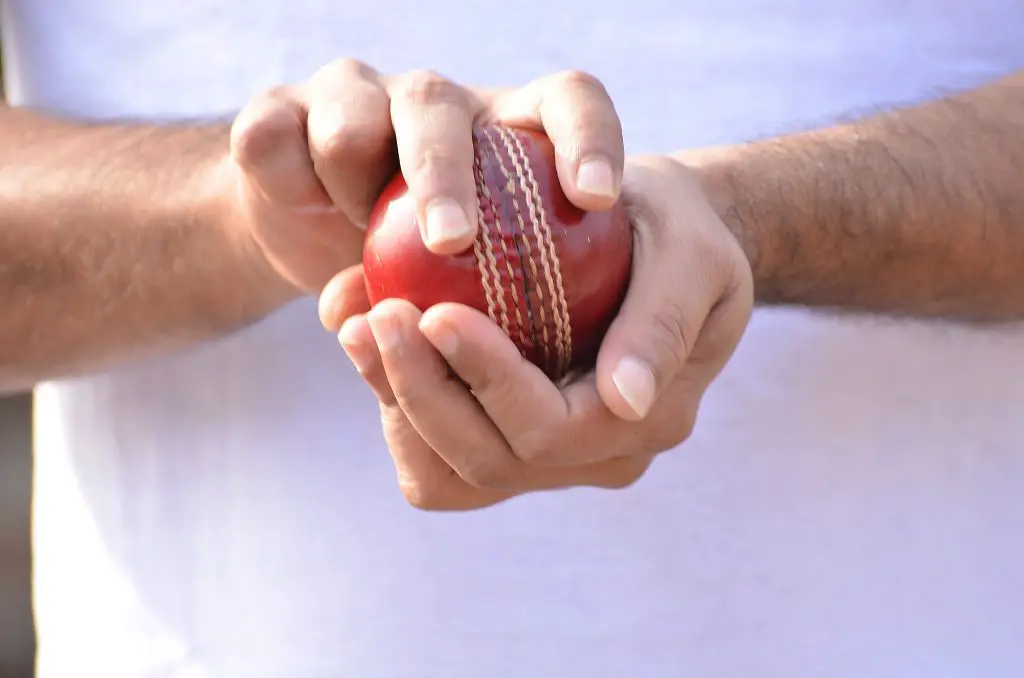
Pace
Pace bowlers rely almost exclusively on their speed in order to unsettle a batsman and take wickets. The fastest bowlers in the game can exceed 90 miles per hour in their delivery and that can be enough to challenge the best batters in cricket.
The potential issue with pace is that there is less movement in the air and off the pitch. While a lower order batsman and those players who are out of form may struggle, world class batters will experience fewer problems against pace. That’s why many quicker bowlers will look to apply additional delivery techniques, such as seam or swing bowling.
Bouncer
A bouncer is a short pitched delivery that is aimed at the batsman’s upper body. It can induce a false shot or it may unsettle the batter if it hits them.
Slower Ball
This is a generic term used to describe all types of slow delivery. A slower ball should be disguised so that the batsman is fooled into thinking that it’s arriving at normal speed.
Leg Cutter
A leg cutter is bowled using a leg spinner’s grip. The intention is to move the ball from leg to off for a right handed batsman while the extra pace is an added weapon.
Off Cutter
The off cutter is the quicker bowler’s version of a stock off spinner’s delivery. It should move from off to leg with some added pace.
Yorker
A yorker ball is a delivery that is intended to pitch very full, almost under the batsman’s bat. If executed correctly and at pace, the yorker can be exceptionally difficult to play.
Knuckleball
The knuckleball is a specific slow delivery. The bowler holds the ball between the knuckles rather than deep inside the fingers. The ball seems to emerge at the same speed but it will move more slowly in the air to deceive the batsman.
Seam Bowling
The seam of a cricket ball holds the structure together but it can also be a useful weapon in a quick bowler’s armoury. When the ball is delivered, it can move off the pitch at an unusual angle if the ball hits the seam when it lands.
This means that the batsman has less time to react because the ball moves off the pitch and not in the air. Seam bowling can, therefore, be a very effective tool when it’s used correctly.
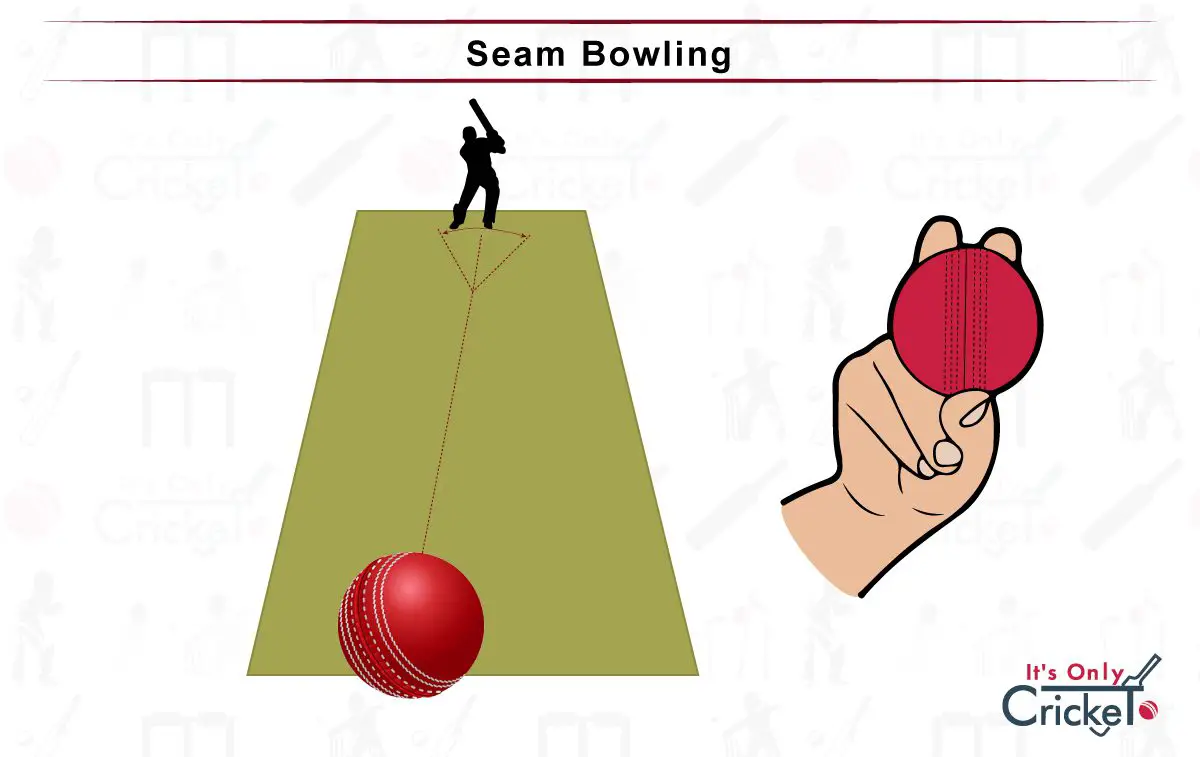
Swing Bowling
Swing bowlers use techniques that make the ball move in the air after it’s been delivered. Inswing can allow the ball to move into the batsman’s stumps while outswing takes it away from the batsman and towards the slip cordon.
Reverse Swing
Reverse swing sees the ball move in a completely different direction to that of conventional swing. This usually happens when the ball gets older and one side has deteriorated significantly.
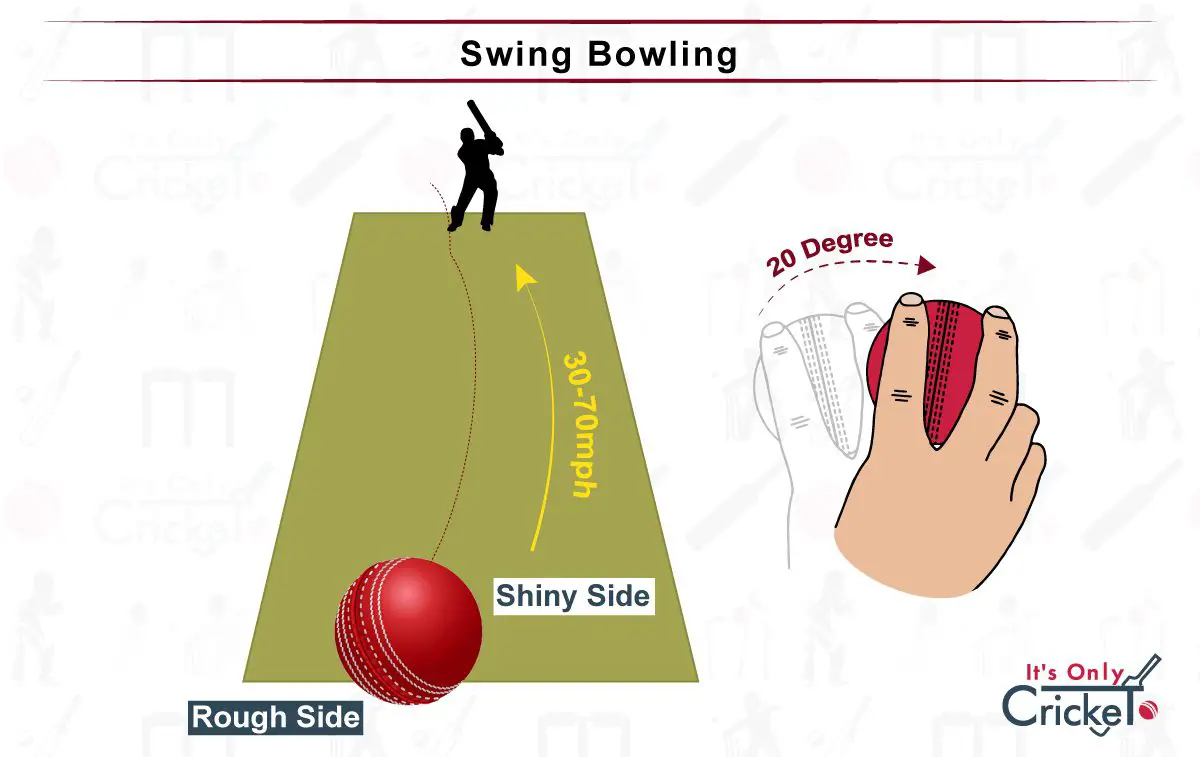
Cricket Bowling FAQ
What Are the Most Important Muscles Used in Fast Bowling?
The complete fast bowling action is so complex from the run-up to the follow-through, that there are virtually no major muscle groups that are not involved in generating that amount of pace. However, the most important muscles in fast bowling are the core muscles, the legs, (most notably the calves), the abdominal muscles, the arms, including shoulders, rotator cuff muscles, biceps, wrist and elbow muscles.
Does Height Matter in Fast Bowling?
Yes, it does. Height is considered an important factor in fast bowling, however it is not a requirement. While it does help the bowler to generate powerful swings, due to naturally having longer levers, but there are plenty of examples of world-class fast bowlers who aren’t tall. Generally, height is known as an advantage to fast bowling, but accuracy is much more essential to the fast bowling style.
Which is Better, Fast Bowling or Spin Bowling?
Both fast bowling (also known as pace bowling) and spin bowling are techniques sharing the same goal, that is to get the better of batsmen and score a wicket. However, the different combinations of speed and flight make both a powerful weapon. However, looking at the strike rates, fast bowlers perform a significantly lower strike rate compared to spin bowlers.
New Innovations
Bowlers are always looking for new ways to confuse batters, and one of the more interesting innovations I’ve seen involves ambidextrous deliveries. There are at least two bowlers in the modern game who can deliver with their right arm as well as their left.
The most notable of these is the Sri Lankan spinner Kamindu Mendis. While this isn’t a completely new technique, his changes between hands hit the headlines, and became a sensation in the modern age of video sharing and social media.
Mendis is a regular part of the Sri Lankan squad, but has yet to start games consistently. Batting is his stronger suit and, at the time of writing, he has a highest test score of 182. He bowls right arm off breaks and left arm orthodox spin, but his returns with the ball are relatively modest.
In English county cricket, Glamorgan’s Ben Kellaway can also bowl with either arm. It’s fascinating to watch, but there are precedents in the game. In 2024, Kellaway became the first bowler to take wickets with different arms since Kent’s Charles Rowe in 1980. Along with Rowe, other bowlers have been ambidextrous, but the emergence of Kellaway and Mendis suggests we may see more of this in the future.
One point to remember if you’re trying this as a young bowler involves the umpire. You must inform the standing umpire that you are changing your delivery style. If not, your next delivery will be called as a no ball.
Final Thoughts
I personally think that each of these deliveries brings its unique flavour to the game of cricket but I’ve always been a fan of sheer pace and impressive spin. There’s nothing like seeing a fast bowler exceed the 90mph mark or a leg spinner turning the ball almost square.
Those are, for me, the pinnacle sof bowling in cricket and it’s always great to see the best pace and spin bowlers displaying their art.
For a more practical take on the bowling action, head to our complete guide on how to bowl in cricket.

